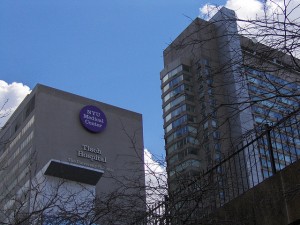Medicaid or an Health Insurance Exchange Plan?
Dec 13th, 2013
For those New Yorkers hovering just above or below 138% of the Federal Poverty Level a question may be burning in the back of their minds, should I enroll in the newly expanded Medicaid program or scrounge together the money to qualify for health insurance exchange plan with a subsidy.
Both have their ups and downsides, so which one makes the most sense?
Medicaid
First, for those who don’t know, Medicaid is a free public health insurance option available to low-income individuals and families. The Obama administration’s Affordable Care Act (ACA) contained provisions to expand the program in all 50 states by raising the income eligibility to 138% of the Federal Poverty Level.
The Supreme Court’s challenge to the ACA in 2012, while upholding the central tenets of the law, made the expansion of Medicaid optional for the states. All told at the moment 25 states plus the District of Columbia have opted for the expansion.
Thanks to the expansion millions of low-income Americans in those 25 states, of which New York is included, will receive the benefit of free health insurance. But how does that match up against a New York State of Health plan?
Health Insurance Exchange plans vs. Medicaid
Of course, it’s not always possible for people to have the ability to choose between Medicaid or New York Health Insurance exchange plan. Those who do qualify for Medicaid can purchase an exchange plan if they want to, but because they’re Medicaid eligible, they cannot receive a federal health insurance subsidy at the exchange.
But for those individuals and families that might only be a few percentage points away from 138 percent of the FPL, and thus qualifying for a hefty subsidy at the exchange, what’s the better choice?
In truth, the networks for Medicaid and exchange plans are very similar, about 70 percent the same. For doctors and hospitals they are similar in another way, reimbursement rates. According to early evidence, the offered reimbursement rates for doctors and hospitals to participate in exchange plans have been as low or lower than the reimbursement rates for Medicaid.
So what if the networks are similar, and one is free and one will cost me money, why shouldn’t you just go with Medicaid if you have a choice? Well, there is a little-discussed aspect of the Medicaid program that could have potentially disastrous consequences for those enrolling in the newly expanded program. It is a practice known as “Estate Recovery.”
What is Estate Recovery?
Up until the age of 55 in a majority of states (New York included), when you enroll in Medicaid everything is taken care of for you free of cost. However, when you turn 55, the state begins tracking the amount of money you’ve cost them for health care intending to recover those costs from your estate after you die.
This can mean putting a lien on a house or other property and essentially seizing it when you die. For those with pensions or property hoping to leave it to their children, this could be a potential disaster waiting to happen for those who can least afford it.
Traditionally Medicaid has only been for the poor, those with very few assets. Now though with the expansion of the program, many people with real assets could be enrolling in the program completely unaware that by enrolling they might be signing up to have their estates seized by the state when they die.
Capitation charge
Medicaid also has what is called a “capitation charge,” which is a minimum monthly charge applied to every enrollee by the private contractors who manage the system. How much that charge is varies widely from state to state, but it can range from a few hundred dollars up to several thousand dollars. It’s also possible for the charge to exceed the cost of care for an enrollee in a given month.
So even if you’re enrolled in Medicaid after the age of 55 and believe you’re not racking up the costs because you’re not at the doctor too often or having expensive surgeries, you can still be running up the bills that will be collected upon your death.
Making your decision
So if you have the means to increase your annual income to push up your eligibility for an exchange plan and a subsidy, it might not be such a bad idea to do that. For those who are at the bottom end of that 138 to 400 percent FPL range, it’s likely that with the subsidy you’ll receive you’d end up paying very little per month for health insurance. In many cases much less than $100.
However for those who don’t have that ability, and that’s the majority of people, you should arm yourself with knowledge about Estate Recovery and Capitation charges. There are exceptions to Estate Recovery in New York State, and ways to avoid or delay it happening. Read up on them here.
Related posts from our blog:
No related posts.
